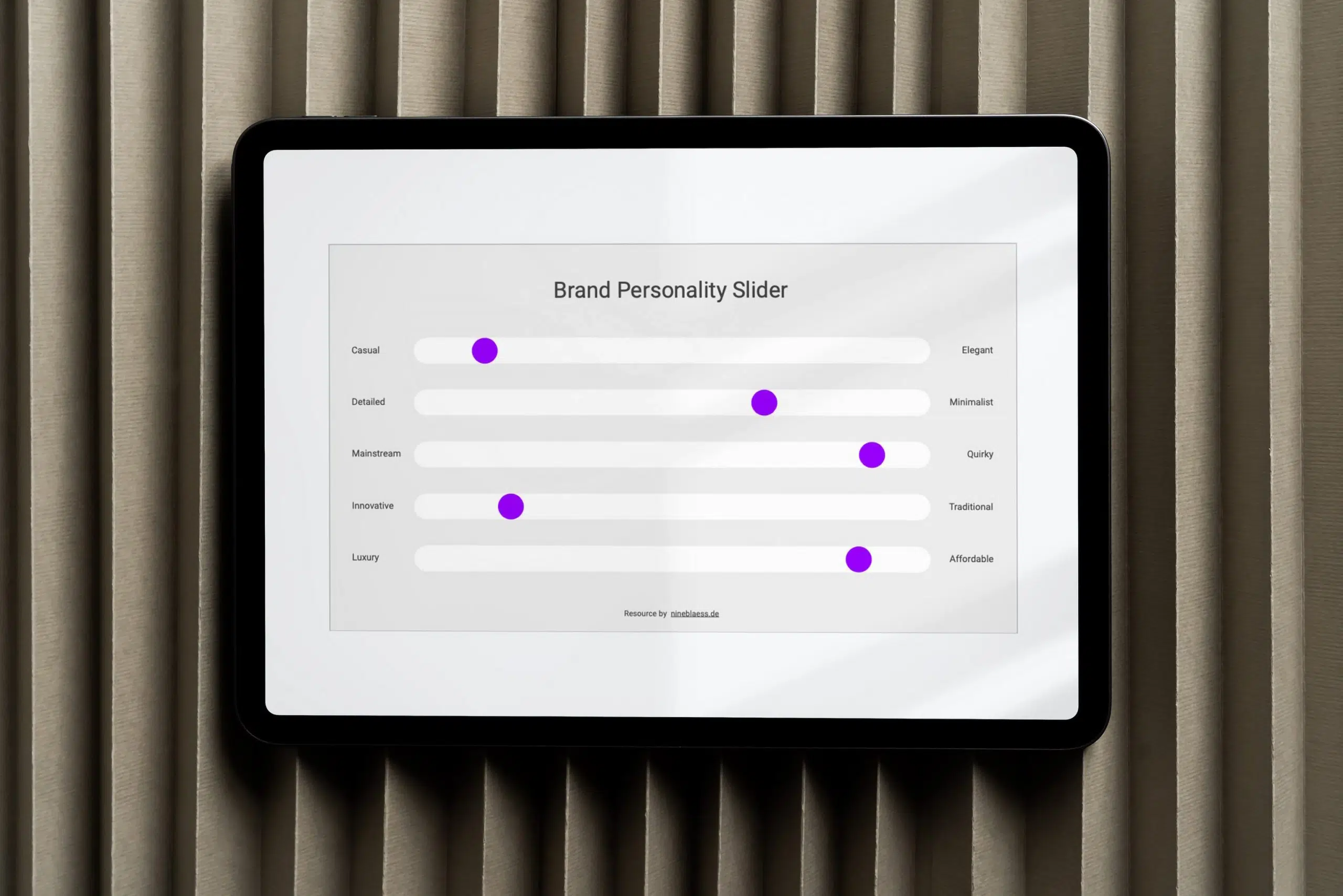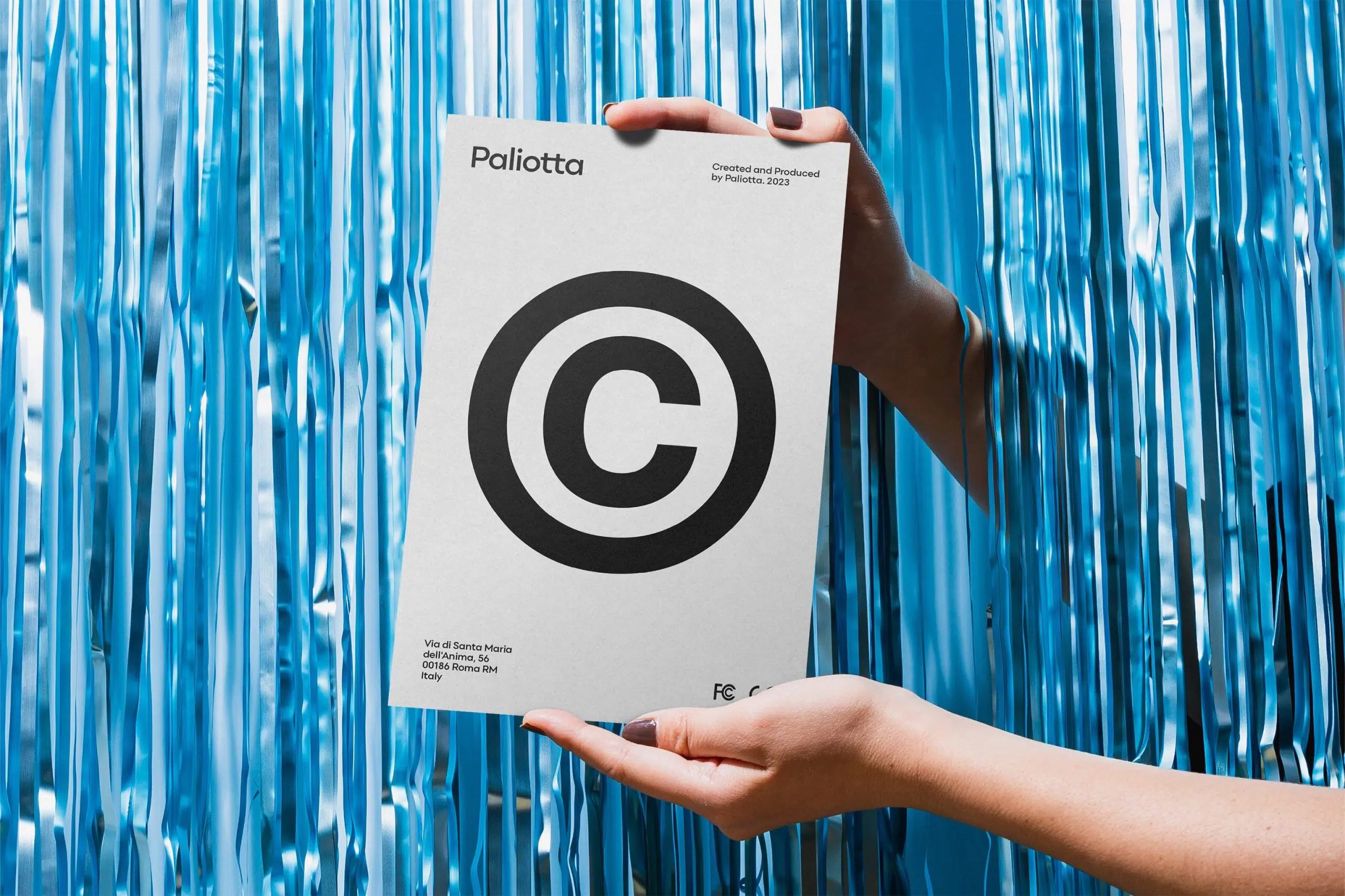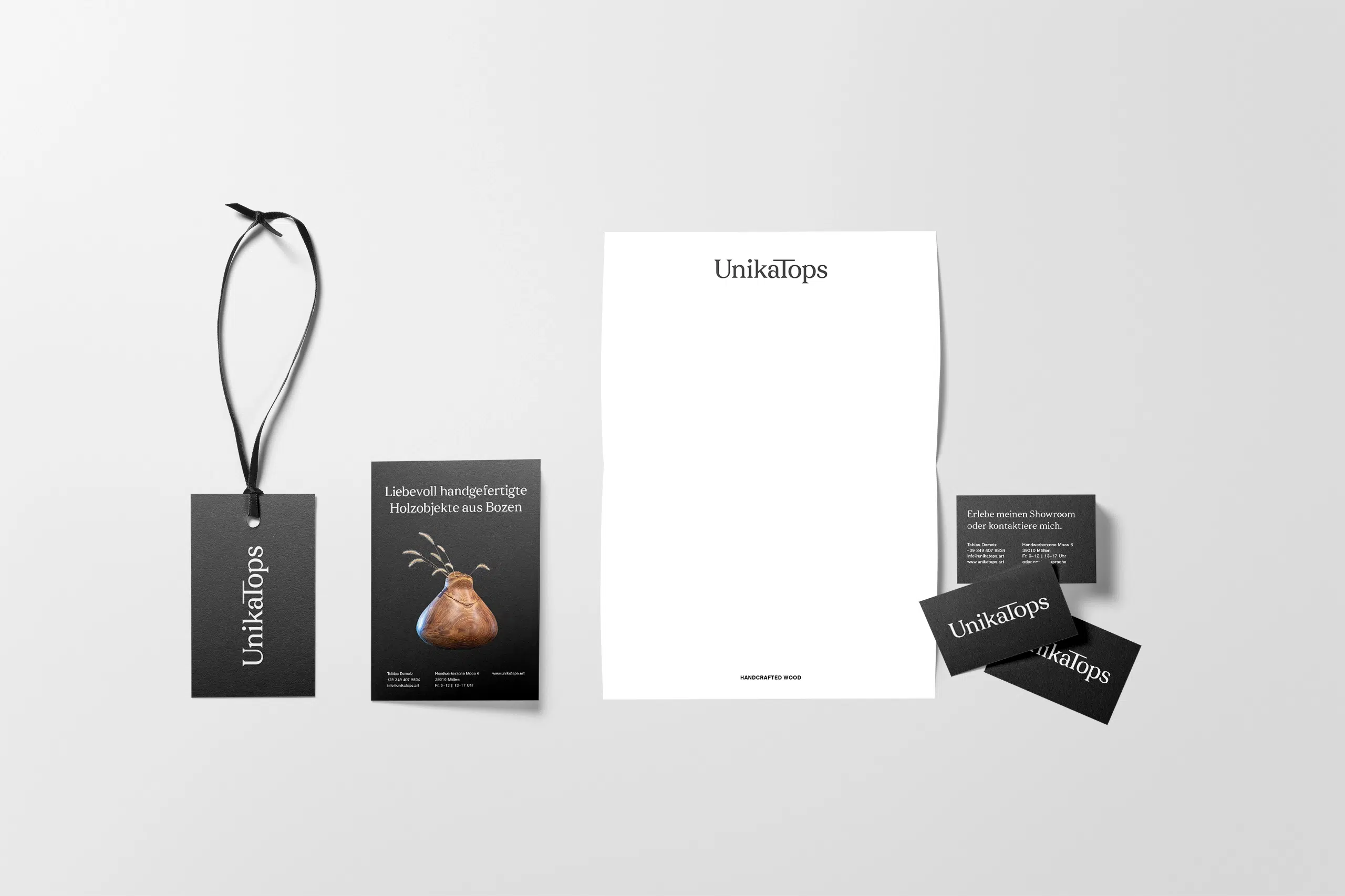Today, a strong brand is important for any business—no matter its size or industry. The sooner you start thinking about your branding, the better. However, not every small business has the resources and capacity for professional branding from the start. Fair enough.
In this article, we’ll look at two scenarios for when branding might be tackled. But before we get into that, let’s agree on what we mean by “branding.”
What do I mean by branding?
Branding is about actively shaping how people perceive and experience your company.
To do this, you need to understand your company’s internal factors, target audience, and market. Based on this, you can define your unique positioning and brand personality, and translate those into a brand identity that resonates with people and sets your company apart.
We should also distinguish between DIY branding and professional branding. The former you might do yourself, or you might hire a generic graphic designer for a simple logo or a few graphics.
With the latter, you hire a freelancer or branding agency to guide you through a comprehensive branding process—creating tone of voice, messaging, and your overall brand strategy, as well as your visual branding.
Branding before launch
Many entrepreneurs choose to invest in professional branding even before launching their business. Because it helps them make a consistent, credible impression from day one—and train people to recognise their brand assets right from the start.
Emily Heyward, founder of top branding agency Red Antler (think Allbirds and Casper), puts it perfectly in her book Obsessed: strong brands don’t wait:
As category after category gets disrupted, as competition gets fiercer, it’s no longer enough to have a great idea, or a better price, or faster shipping. Founders need to be thinking about brand from before day one; it needs to be embedded in their culture from the very start. They need to build a brand that people will fall madly in love with at first sight, and they need to do it before they even launch.
I agree with Emily: pre-launch branding can be powerful. The success of Red Antler clients like Hinge, Prose, and Judy shows how early investment in branding helps brands carve out a clear position, build emotional connection, and stand out from the crowd.
But let’s be honest—this route isn’t right for everyone.
Pre-launch branding takes time, research, and a decent budget. And given that around 50% of small businesses don’t make it past five years, pouring resources into branding too early can feel like a gamble.
For many small businesses, a more flexible approach—where the brand evolves over time—makes more sense. You can learn, adapt, and refine your identity as you grow.
Still, whether you go all in from the start one or take a slower route, consistency is key.
Even if you don’t brand your company professionally, yet, try and stick to the same colours, fonts, and voice across touchpoints.
Even with a small budget, repeating your visuals and messages helps people remember you—and that’s where brand recognition begins.
Pros of pre-launch branding
- Generates excitement and anticipation through strong storytelling, design, and clear messaging.
- Creates a recognisable and cohesive identity, so people start remembering your brand from day one.
- Makes marketing more effective by building a clear connection between your brand and its messaging.
- It boosts credibility and trust, when everything looks and feels aligned.
- Raises the perceived value, because customers are likely willing to pay more when the branding signals quality (see my article on pricing and brand perception).
- Helps you stand out by clearly differentiating your brand from others.
- Helps you make the right decisions that align with the image you want to project.
Cons of pre-launch branding
- Requires time, money—resources that early-stage founders may not have.
- Carries risk, especially when half of all small businesses don’t make it past the five-year mark.
- Can limit flexibility, because committing to a brand too early might make it harder to pivot.
- A polished brand can set high expectations, which may be difficult to deliver on when first starting out.
Who can benefit from pre-launch branding?
Innovative startups
Startups with unconventional ideas can use branding to build anticipation and curiosity before they even launch. A strong identity positions them as pioneers in their space and helps attract early adopters who are keen to try something new.
Direct-to-consumer (D2C) brands
For D2C companies, especially in e-commerce, emotional connection is everything. Pre-launch branding lets them shape the customer experience from the start—building loyalty, trust, and a clear identity that stands out in a crowded market.
Product-based businesses
If you’re selling physical products, developing your brand identity from the outset will help you to design packaging and labels that reflect your brand personality, as well as creating a strong shelf presence.
These details play a major role in how your brand is perceived, and it’s difficult to get them right without a clear brand foundation.
Branding after launch
As a small business owner with a limited budget, you likely have other pressing priorities—product development, funding, marketing. So, investing in branding before launch might not feel like the most urgent thing.
But here’s the thing: from the moment your business goes public, people will form opinions. That means you’re already branding—whether you plan to or not.
Every interaction, every post, every email, every bit of packaging—it’s all shaping how your business is perceived.
Now, you may not have the time or money for a full professional branding process right away. You might not even have everything figured out yet. That’s okay. But that doesn’t mean you should neglect your brand altogether.
Even in the earliest stages, it’s smart to establish a few consistent brand elements—like your brand typography, colour palette, and tone of voice. These simple decisions can help your brand feel cohesive and recognisable, and they build familiarity over time.
And don’t worry, branding doesn’t have to be set in stone. As your business evolves, your brand can evolve with it.
You can refine or refresh your brand identity later if needed. It’s not ideal, but it’s doable, especially if the changes are strategic and thoughtful.
It’s also a good idea to get clear on your values early. What do you stand for? What do you believe in? These core beliefs help build a deeper emotional bond between your brand and your audience.
As the Harvard Business Review writes:
64% of consumers say that sharing the same values with a brand is the primary reason they have a relationship in the first place.
And here’s one more tip: if things feel too early-stage or messy to launch a polished brand, consider leaning on your personal brand for now. Invite people into your journey. Share the behind-the-scenes.
That way, you can build connection and trust through authenticity—even before everything’s perfect.
A Success Story from Deliciously Ella
Deliciously Ella is a great example of how you can build a strong brand step by step—by staying true to your values and genuinely connecting with your audience.
Ella Mills started out as a food blogger, sharing her personal journey of improving her health through a plant-based diet. What began as a small blog quickly gained traction. Her first cookbook became a UK bestseller, setting the stage for a much bigger business.
Today, Deliciously Ella includes a range of bestselling products, several more books, a restaurant (at one point), and a wellness app.
Throughout her journey, Ella has maintained a brand identity centred around her personal story, values and mission to promote healthier living.
She also used social media and her blog to connect with her audience and build a community around her brand.
By taking her audience along on her journey, Ella has built a loyal following and a brand that has grown organically, with a consistent identity that’s evolved naturally over time.
Let’s take a look at how her website has changed—from earlier versions to where it is now.
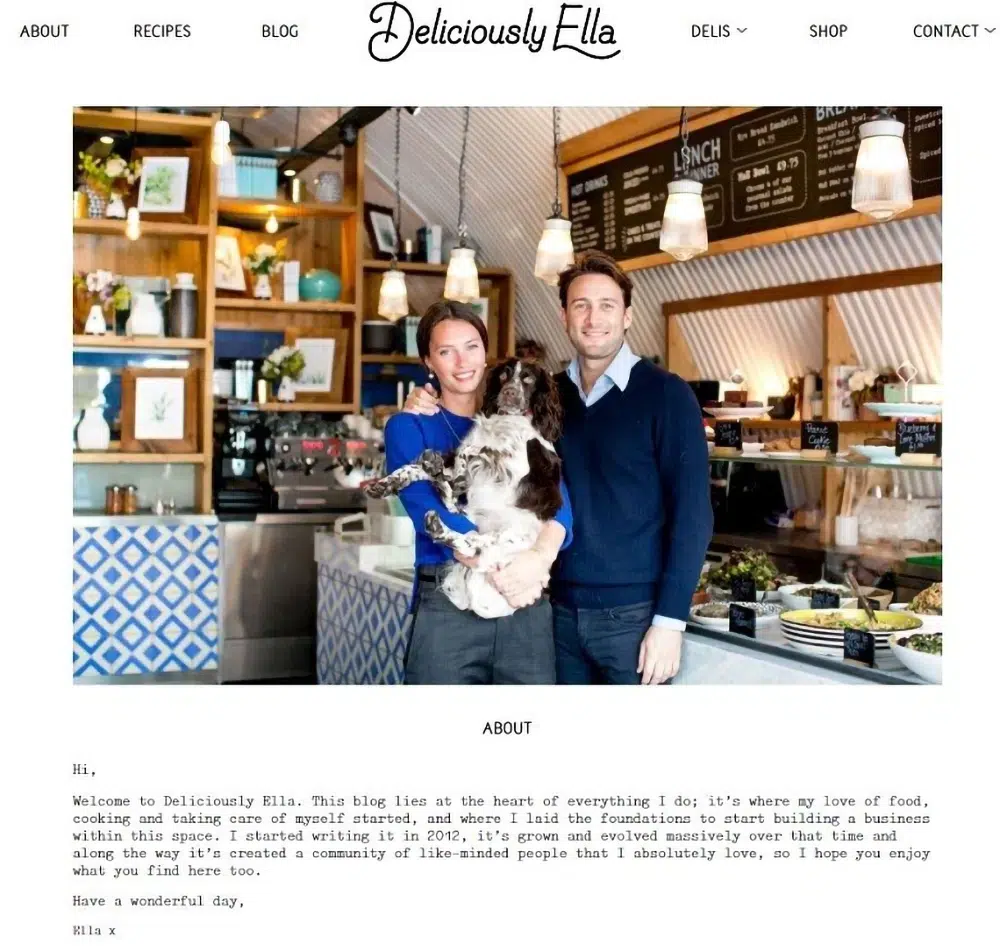

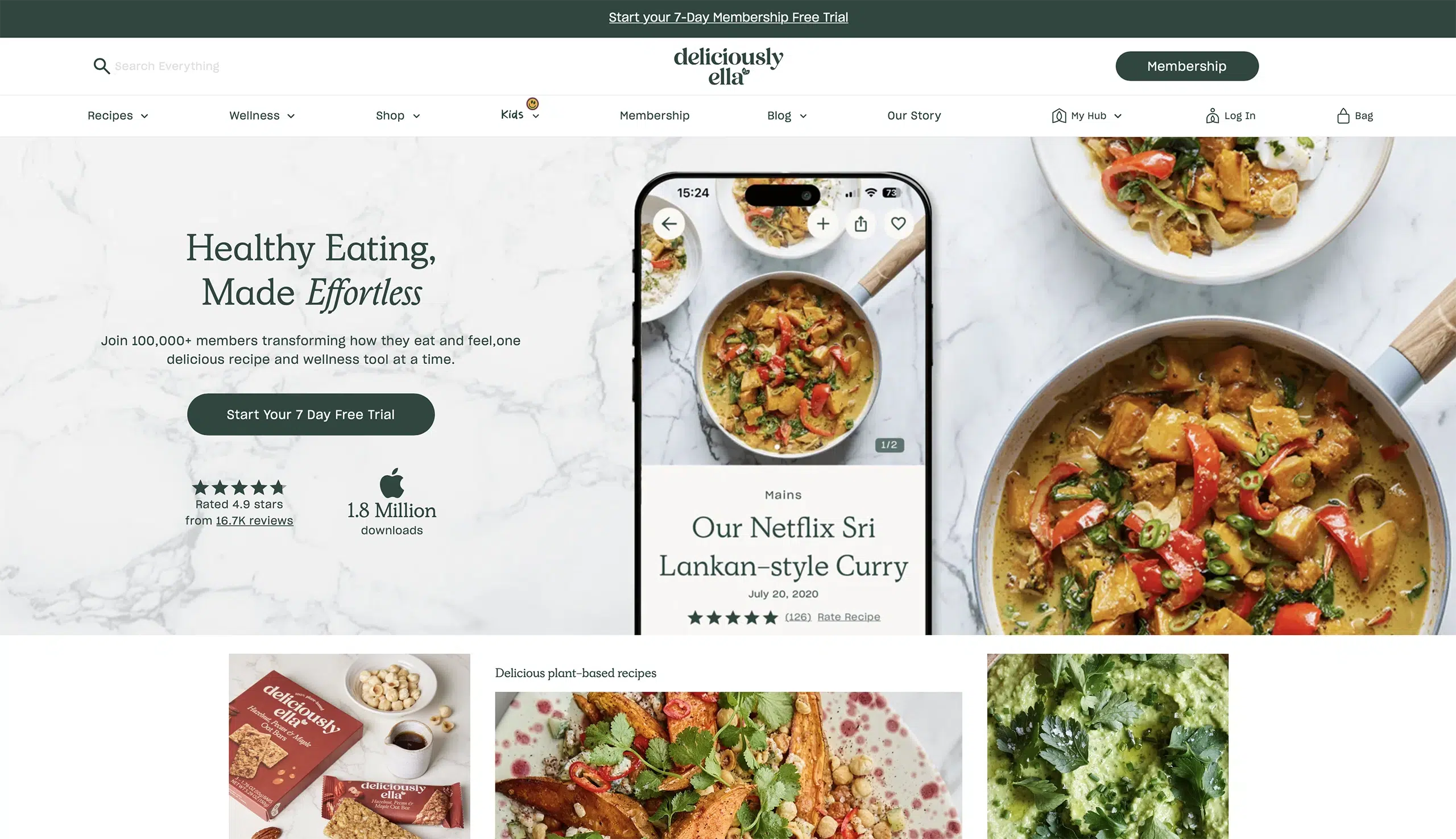
Pros of post-launch branding
- You get to shape your brand based on actual customer interactions—not just assumptions.
- You can adapt your branding to fit market trends, customer needs, or even a pivot in your business model.
- Early-stage businesses often evolve quickly. Delaying branding gives you the freedom to try things out before locking in your identity.
Cons of post-launch branding
- Without branding from the start, you might miss the chance to generate early excitement and anticipation.
- A lack of clear direction can lead to mixed messages—confusing your audience and diluting your offer.
- Once you have customers, changing how you look or sound can alienate them and erode the trust you’ve built—or worse, make them not recognise its you.
- Without a defined identity, it’s hard to stick in people’s minds or stand out in a crowded market.
Who can benefit from post-launch branding?
Businesses that revolve around a person
Small businesses built around a founder often begin by leveraging the founder’s personal brand. This creates a natural connection with early audiences.
Professional branding can follow once the offer, audience, and business direction are better defined.
Experimental startups
Startups with experimental or evolving business models—especially in digital or tech spaces—may benefit from post-launch branding.
By waiting, they can refine their brand positioning based on real-world usage and customer feedback, rather than assumptions.
Business-to-business (B2B) brands
In B2B, networking and operational efficiency are often prioritised in the early stages.
Post-launch branding allows them to craft an identity that reflects actual customer needs, industry expectations, and market positioning, rather than guessing from the outset.
6 signs it’s time for professional branding
1. Lack of brand awareness
When your target audience doesn’t know who your brand is or what it offers, branding can help improve brand awareness and shape people’s perceptions of your brand.
2. Difficulty attracting the right customers
If you’re struggling to attract the right customers—or any at all, it may be a sign that you need to uniquely position your brand in the market.
3. Difficulty standing out
When your company struggles to stand out from competitors, branding helps create distinctiveness.
4. Outdated or unprofessional communication
If your communication feels outdated or unprofessional, it can give the impression that your company is a bit outdated or unprofessional.
Branding will help align your brand with your expertise, audience and market trends.
5. The brand doesn’t reflect your values and personality
You want your brand to reflect your business’s values and personality. Branding can help bring this alignment.
6. Overwhelm with business-related decision-making
As an entrepreneur, you face hundreds of decisions daily—from finance to marketing to HR.
You may be surprised, but branding can help with decision-making by setting a clear focus and values to follow.
As you can see, professional branding often becomes inevitable at some point.
However, I wouldn’t recommend making changes without a solid reason. Building trustworthy and distinctive brand assets takes time and effort.
So, if you already have assets in use, it’s wise to conduct a thorough brand audit before deciding to discard them.
Conclusion: When is the best time for branding, then?
The best time to focus on branding is before you launch your business—whether you go professional or take the DIY route.
As soon as your company becomes visible, people will start forming opinions, making branding inevitable.
That said, the ideal timing for professional branding depends on your offer, business model, experience, resources, and goals. Some entrepreneurs invest in branding upfront, while others prefer to develop their brand gradually as their business grows.
Whichever path you choose—professional help or DIY—consistency and staying true to your values and brand personality are key. Over time, your brand will naturally evolve and mature.
If you want support with your branding journey, let’s chat.
Title image by Antoni Shkraba Studio











